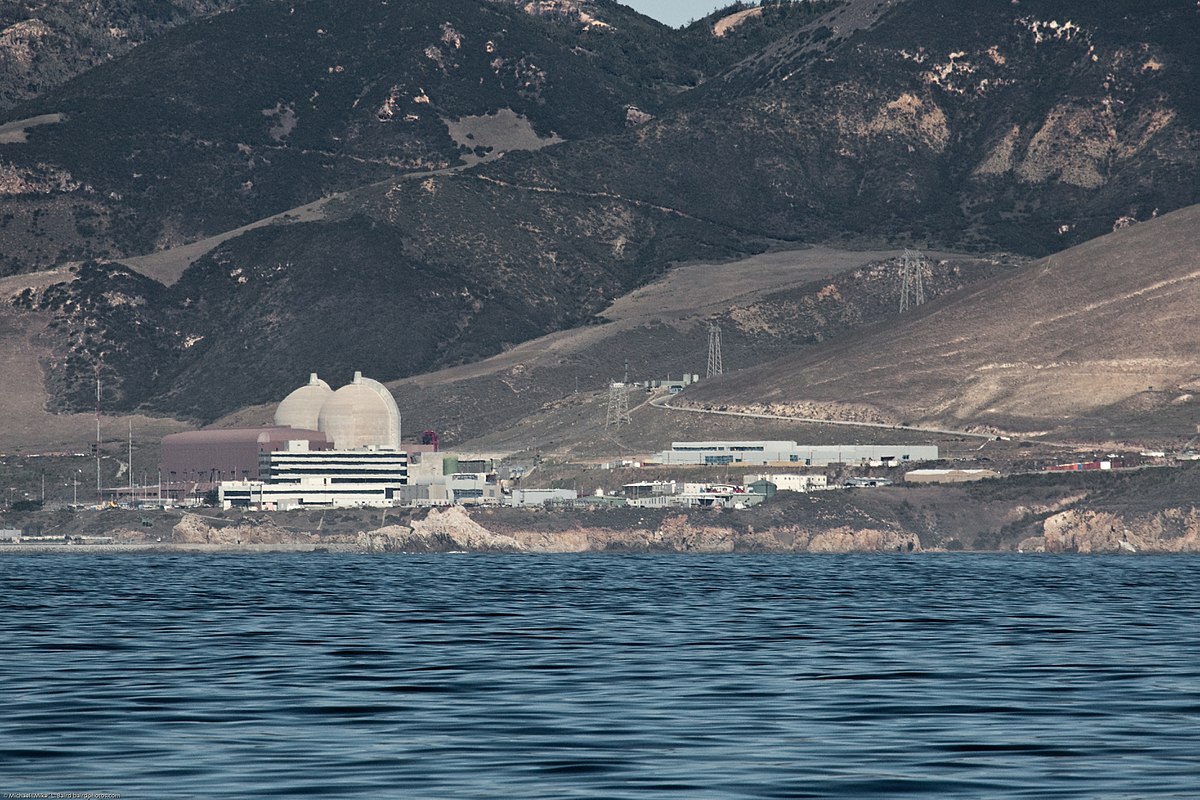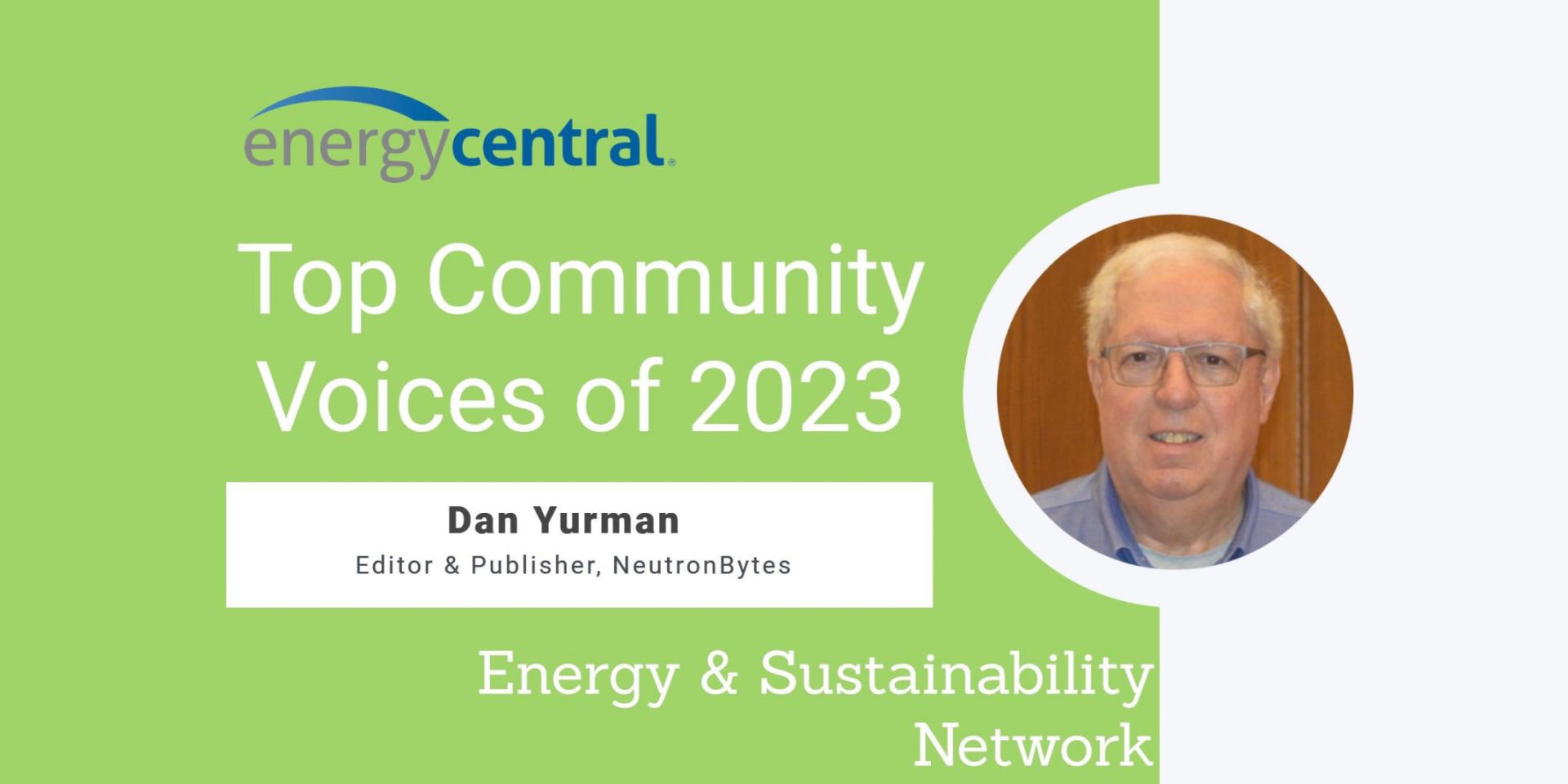Palisades nuclear power plant. (Photo: Holtec)
A bipartisan group of nine House members is calling on the Department of Energy to give “fair, full, and swift consideration” to Holtec International’s application for DOE Loan Programs Office funding to restart the company’s Palisades nuclear plant, closed last year by the facility’s previous owner, Entergy.
Diablo Canyon nuclear power plant. (Photo: Mike Baird/WikiCommons)
The Nuclear Regulatory Commission has accepted for review Pacific Gas and Electric’s formal request to extend Diablo Canyon nuclear power plant’s operating licenses for another 20 years.
Workers place the dome atop Hinkley Point C’s first reactor building on December 15. (Photo: EDF Energy)
EDF Energy’s new nuclear build megaproject at Hinkley Point C last Friday moved forward—or, more literally, upward then downward—when workers, with a substantial assist from Big Carl, the world’s largest crane, successfully lifted the C1 reactor building’s 47-meter-wide, 245-ton steel dome into place.
LLNL physicist Mary Burkey developed a novel approach to simulating the energy deposition from a nuclear device on an asteroid’s surface. (Photo: LLNL)
The same high energy density that makes nuclear energy a clean and efficient source of power could make it a good alternative to defend the planet against catastrophic asteroid impacts. NASA demonstrated the world’s first planetary defense technology in September 2022 by deliberately crashing a “kinetic impactor”—a heavy, box-like spacecraft—into an asteroid. Now, researchers at Lawrence Livermore National Laboratory have developed a new tool to model how a nuclear device could deflect—or even destroy—an asteroid threat to Earth in a more efficient and controlled way.
The Diablo Canyon nuclear power plant. (Photo: Doc Searls)
The California Public Utilities Commission (CPUC) voted last Thursday to extend the life of Diablo Canyon an additional five years. The decision was the final step in the extension of the state's last remaining nuclear power plant, whose two reactors will now operate until at least 2029 and 2030, respectively, instead of closing in 2024 and 2025.
Applause at the conclusion of COP28. (Photo: Kiara Worth/UN Climate Change)
The United Nations' Climate Change Conference of Parties (COP28) in Dubai, United Arab Emirates, closed on December 13 after debate on a “global stocktake” pushed negotiations a full day past the scheduled end date. Though advocates hoping for a phaseout of fossil fuels were ultimately disappointed and must settle for “transitioning away,” another first—after 30 years of global climate conferences—is the inclusion of nuclear energy among the zero-emissions and low-emissions technologies that still could, if deployment is accelerated, support deep reductions in greenhouse gas emissions to limit global warming to 1.5°C.
STARFIRE is the name of an inertial fusion energy hub led by Lawrence Livermore National Laboratory—one of three hubs announced in early December. (Image: LLNL)
The Department of Energy recently announced that it was establishing three inertial fusion energy (IFE) hubs and funding them with a total of $42 million over four years. The leaders of the three hubs selected by competitive peer review—Colorado State University, Lawrence Livermore National Laboratory, and the University of Rochester—all issued press releases touting the attributes and plans of their facilities and their research collaborators on the same day—December 7.
Concept art for a Hermes plant. (Image: Kairos Power)
Kairos Power has received the go-ahead from the Nuclear Regulatory Commission to build its Hermes demonstration reactor at the Heritage Industrial Park in Oak Ridge, Tenn., making it the first non–light water reactor approved for construction in the United States in more than 50 years.
Concept art of an ARC-100 plant. (Image: ARC)
Small modular reactor developer ARC Clean Technology, Canadian utility New Brunswick Power, and nuclear plant operator Korea Hydro & Nuclear Power have signed a memorandum of understanding to explore opportunities for commercializing ARC technology in Canada, South Korea, and the United States, as well as in other regions where KHNP has business operations.
Carson Noack poses alongside the NEXT Lab’s Molten Salt Test System drainage tank, for which he played a key role in designing and fabricating.
(Photo: Kamryn Kelly)
Carson Noack is a busy young man with a clear vision of the future of energy. The 23-year-old undergraduate is slated to receive his bachelor’s degree in mechanical engineering from Abilene Christian University (ACU) in 2024. He’s also a researcher in the university’s Nuclear Energy eXperimental Testing (NEXT) Laboratory, which has been making news with its plans to build the first new research reactor in the United States in more than 30 years—the Molten Salt Research Reactor (MSRR).















